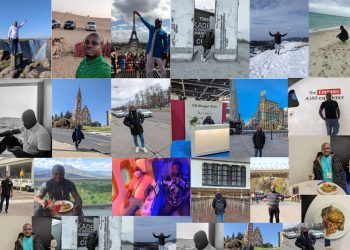History of the Cape Coast Castle dates back to the 16th century when the Portuguese traders arrived on the shores of Ghana and established a trading post on the shores of Cape Coast in 1555. The purpose of the trading post was primarily to serve as a place of shelter and storage of goods such as gold and timber which the Portuguese traders exchanged with the indigenes in a batter trading system.
Little did anyone know the trading post would decades later become an infamous castle where indigenes were held captive and then shipped across the Atlantic to the Americas and Europe after being acquired from local slave merchants in the hinterland.
The shift from goods trading to human trading took off in roughly 1654 after the Swedes through a company known as the Swedish African Company had taken over the trading post and further developed it into a well-constructed timber fort with the intent of continuing the trading activities the Portuguese were into.
This however changed with the high demand for human labour in the Americas and parts of Europe, convincing the Swedish traders to abandon the commodity trading business and indulge in transporting slaves across the Atlantic to Europe and the Americas.
With the trade in human trafficking becoming booming and generating great and immeasurable wealth for the European traders, the Cape Coast shore became a battleground among the Europeans with each seeking to have control over the area and fort as the Cape Coast seashore was a major exit and entry point for the European traders.
The fort later fell into the control of the Dutch who also continued the trans-Atlantic slave trade for some time and further developed the fort to make it more resilient to attacks and large enough to keep the slaves captive until they were shipped.
The British were the last group of people to have had control of the fort before worldwide outcry and activism brought the horrendous practice of trans-Atlantic slave trade to an end. The British, however, did not leave after the practice ended, staying behind to colonize Ghana, making the British government the official owners of the Fort until 1957 when Ghana gained independence and the British government left the shores of the country, handing over the castle to Ghana in the process.
Inside the castle are pieces of evidence of the heinous crimes committed against the indigenous people, with objects like shackles used to chain slaves kept in the dungeons on display. Other notable things one should expect to see upon visiting the castle are the Door of No Return, sediments of decayed bones and flesh of slaves who died before shipment but their bodies were left to rot away by their slave masters.
The Cape Coast Castle is definitely a place every Ghanaian must visit at a point in their life, to learn about the suffering and tragedy our forefathers faced.
Still have some travel questions? Ask in our Travel WhatsApp Group.







